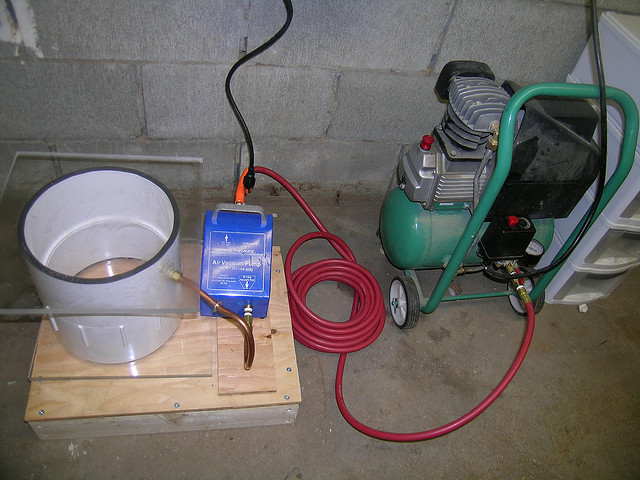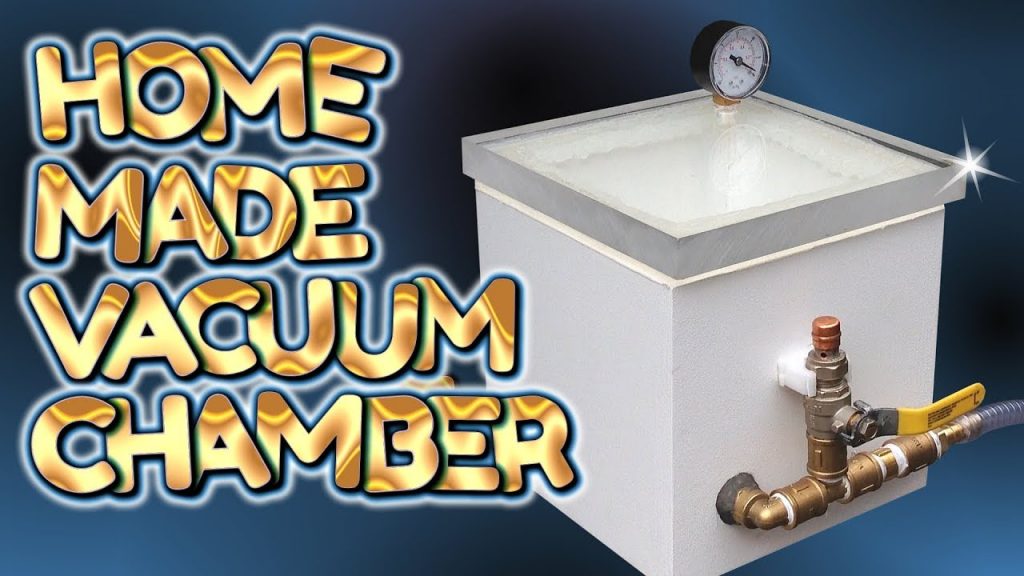Build a Vacuum Chamber
A vacuum chamber is an enclosed space within a rigid structure that uses a vacuum pump to remove all air and gases and creates a low-pressure vacuum state. This can be helpful in the production of products that need to avoid contamination or moisture. Vacuum chambers are also useful in some types of food production.
Vacuum Chambers Uses
Contents
Vacuum chambers have various uses in very different fields. They can be used to test objects that are built for outer space. A thermal vacuum chamber can be used to actually simulate the outer space environment the outside of a spacecraft would experience.
Another common use for vacuum chambers is degassing. When two components are mixed, sometimes gas is created as a byproduct. A vacuum environment can pull these gases away, keeping the end product pure. An example of this method being used is in the mixing of resin and silicone rubbers.

A NASA vacuum chamber.
They can also be used for vacuum drying. Sometimes during the production process, liquids can collect on a product. Vacuum chambers can be used to pull the moisture off, keeping the product dry. Combined with heat, this is a very effective method of drying.
Vacuum chambers are also used often in the process of freeze-drying food. Food is flash-frozen (frozen quickly), then placed in a vacuum chamber where the moisture sublimates (goes directly from solid to gas) and is removed. The end result is the food being completely devoid of any water.
Vacuum Chamber Materials
Vacuum chambers need to be made of a rigid material, to resist the pressure differences created by the vacuum. They also need to avoid other pitfalls, such as corrosion, absorption of moisture or trace gases, and magnetic interference.
Most vacuum chambers are made of aluminum, as it can avoid most of these problems. It’s strong enough to withstand low to medium vacuum environments. It’s non-magnetic, which means it won’t interfere with attempts to control the magnetic field inside the chamber from the outside. It’s also good because it absorbs very little moisture and trace gases.
Some other common materials for low to medium vacuum chambers are:
- Brass
- High-density ceramic
- Glass acrylic
Low to medium vacuum chambers can generally use rubber o-rings to seal their ports effectively.
For high and ultra-high vacuum chambers (having pressures lower than 10-13 atmosphere) stainless steel is often used. It can handle more extreme pressures that other materials can’t and can be welded, making the seals stronger. It also has the properties of low magnetic interference and resistance to erosion and the absorption of moisture/gases.
High and ultra high-pressure vacuum chambers generally need steel bolts to seal their ports because of the increased pressure.
DIY: How To Build Your Own Vacuum Chamber
Vacuum chambers have many different uses in many varied fields. They can be used for degassing (removing bubbles of gas that form when two components are mixed, to keep the mixture pure). They can be used for vacuum drying (pulling off any moisture that may collect during the production process). They can also be used in the process of freeze-drying food (removing all moisture from food for easy storage and transport).
https://www.youtube.com/watch?v=Vv0ECOX0JSM
While vacuum chambers have many different applications, they can also be very expensive. Luckily, with a little creativity, it’s fairly easy to build your own vacuum chamber.

An example of a DIY vacuum chamber.
STEP 1: FIND A CHAMBER
First, you’ll need a chamber. Make sure it’s large enough to fit whatever you’re looking to put in your chamber, with a little spare room (the vacuum process can cause some substances to expand). Your chamber must be rigid enough to resist the pressure created by the vacuum environment. It must also be able to resist corrosion and the absorption of moisture and trace gases. Avoiding magnetic interference may be necessary as well, depending on what you’re planning to use your vacuum chamber for.
Aluminum and stainless steel are often used for vacuum chambers, as they meet all of the above criteria. Other effective materials are brass, high-density ceramic, and glass acrylic. Stronger, rigid plastics can be used as well.
The most natural shape for your chamber is a cylinder, as it is the easiest shape for a vacuum pump to work on.
STEP 2: YOUR TOP AND BOTTOM
If your chamber is a tube open on both ends, you’ll need to create a top and bottom. The material must meet the same criteria as outlined above. They also must be able to seal completely, with no gaps for air to escape. Consider attaching a rubber mat to the top and bottom to cushion against the chamber. It will form an airtight seal when the vacuum pump starts sucking and will allow for a less-than-perfect cut of your chamber ends. It also allows for an easily removable top.
STEP 3: SET UP YOUR VACUUM PUMP
You’ll need a vacuum pump, of certain strength depending on your needs (if it’s freeze-drying, you’ll need it to be capable of a pump level below 133 x 10-3). Drill a hole somewhere in the chamber or top, just large enough for the vacuum pump to fit through. Seal with rubber o-rings, making sure there is no air leakage.
Give your vacuum pump a few test runs, and as long as there is no air leaking it should be functioning properly.
Good luck and stay prepared!

